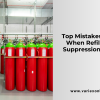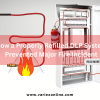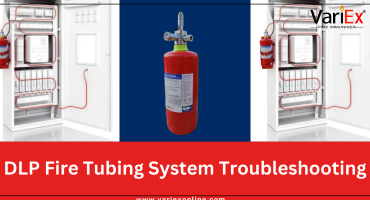![]()
Fire Immuniser
+91-7829629111
Email: info@variex.in
Varistor Technologies Pvt. Ltd.
Block-1, First Floor, Ardente Office One, Hoodi Circle, ITPL Main Road, Bengaluru, Karnataka 560048, IN
How DLP Tubing Is Revolutionizing Fire Safety in Hospitals
How DLP Tubing Is Revolutionizing Fire Safety in Hospitals
Fire safety in hospitals is a critical concern due to the presence of oxygen-rich environments, electrical equipment, and immobile patients. Traditional piping systems pose a risk of fire propagation, making DLP tubing systems a game-changer in ensuring safer hospital infrastructure.
This article explores how DLP tubing is transforming fire safety in healthcare facilities, its benefits over conventional piping, and why hospitals should adopt this innovative technology.
What Is DLP Tubing?
DLP tubing, or Double Layer Pipe tubing, is an advanced fire-resistant piping system designed for high-risk environments such as hospitals, laboratories, and industrial settings. It consists of two layers—one providing mechanical strength and the other offering fire resistance and insulation.
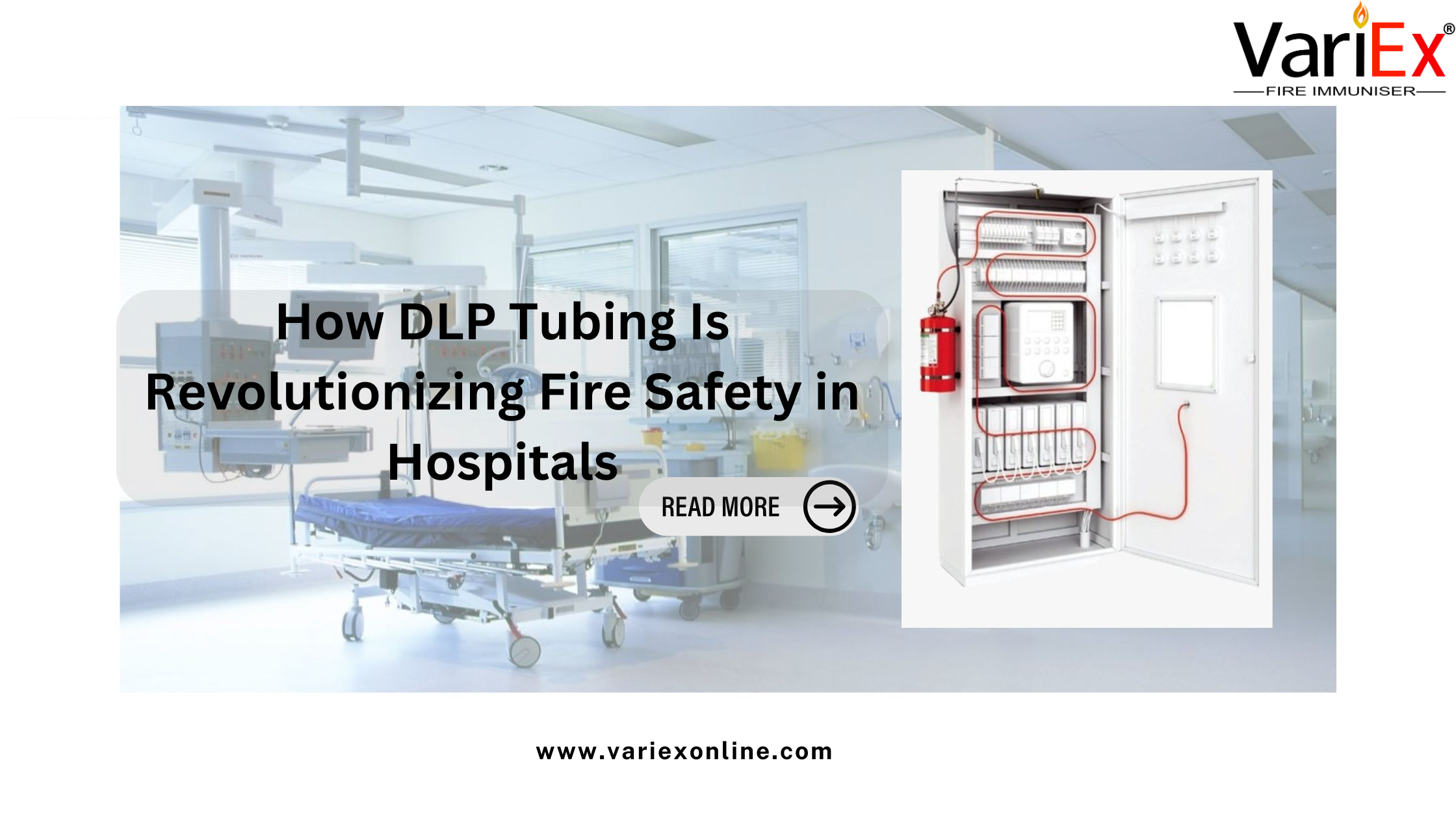
Why Fire Safety Is Critical in Hospitals
Hospitals are highly vulnerable to fires due to:
✔ Presence of combustible materials (medications, alcohol, gases)
✔ Use of high-power medical devices
✔ Limited mobility of patients
✔ Complex hospital layouts that make evacuation challenging
Thus, having a fire-resistant and reliable piping system like DLP tubing is essential for preventing and containing fire outbreaks.
How DLP Tubing Enhances Fire Safety in Hospitals
1. High Fire Resistance
DLP tubing is designed to withstand extreme heat, making it ideal for hospitals where fire risks are high. Unlike PVC or metal pipes, it prevents flame propagation and protects critical medical gas supply lines from heat damage.
2. Prevents Fire Spread in Walls and Ceilings
Hospital infrastructure includes a network of pipes running through walls, ceilings, and floors. In case of a fire, DLP tubing acts as a barrier, preventing fire from spreading through the hospital’s structure.
3. Protection of Medical Gas Pipelines
Hospitals rely on medical gases like oxygen and nitrous oxide, which can accelerate fires. DLP tubing encases these gas pipelines, reducing the risk of leaks or explosions.
4. Compliance with Fire Safety Regulations
Many fire safety regulations now mandate the use of fire-resistant materials in healthcare facilities. DLP tubing meets stringent standards like:
NFPA 99 (Health Care Facilities Code)
ISO 7396 (Medical Gas Pipeline Systems)
BS EN 13501 (Fire Classification of Construction Products)
5. Lightweight and Easy to Install
Compared to traditional metal pipes, DLP tubing is lighter and easier to install, reducing labor costs and minimizing hospital downtime during installation or maintenance.
Comparison: DLP Tubing vs. Traditional Piping Systems
The table below compares DLP tubing with traditional piping materials in hospital fire safety applications:
| Feature | DLP Tubing | PVC Pipes | Metal Pipes |
|---|---|---|---|
| Fire Resistance | High (self-extinguishing) | Low (melts easily) | Moderate (can conduct heat) |
| Medical Gas Compatibility | Excellent | Poor | Good |
| Prevents Fire Spread | Yes | No | Partially |
| Installation Ease | Easy | Easy | Difficult |
| Corrosion Resistance | High | High | Low (prone to rust) |
| Cost-Effectiveness | Moderate | Low | High |
Key Benefits of DLP Tubing for Hospital Fire Safety
✅ Reduced Risk of Fire-Related Fatalities
With its fire-resistant properties, DLP tubing minimizes the chances of fire spreading, giving staff and patients more time for safe evacuation.
✅ Ensures Uninterrupted Medical Gas Supply
Even in the event of a fire, DLP tubing protects oxygen lines, ensuring continuous supply to critical care units.
✅ Longer Lifespan & Durability
Unlike metal pipes that corrode over time, DLP tubing offers long-term reliability with minimal maintenance.
✅ Cost Savings for Hospitals
While the initial investment may be slightly higher than PVC, reduced maintenance and fire risk make it a cost-effective choice for hospital administrators.
How Hospitals Can Implement DLP Tubing for Maximum Safety
1️⃣ Conduct a Fire Risk Assessment: Hospitals should assess areas where fire hazards exist and replace high-risk piping with DLP tubing.
2️⃣ Prioritize Critical Areas: Install DLP tubing in oxygen supply lines, emergency wards, ICUs, and surgical units where fire safety is paramount.
3️⃣ Train Hospital Staff: Ensure maintenance teams and facility managers understand how DLP tubing improves fire safety and how to handle emergency situations.
4️⃣ Work with Certified Installers: Hospitals should collaborate with DLP tubing specialists to ensure compliance with fire safety regulations.
Case Study: DLP Tubing in a Leading Hospital
In 2023, a major hospital in New York City upgraded its fire protection system by replacing traditional metal and PVC pipes with DLP tubing.
✅ Results:
30% reduction in fire risk in high-risk zones
Improved patient and staff safety in ICUs and operating rooms
Compliance with updated fire safety codes
This real-world example shows how DLP tubing can significantly enhance hospital fire safety while improving compliance and cost-efficiency.
Conclusion
DLP tubing is a revolutionary solution for fire safety in hospitals, offering unmatched fire resistance, durability, and protection for medical gas lines. With increasing safety regulations, hospitals must adopt this technology to ensure patient and staff safety.
By integrating DLP tubing into their infrastructure, hospitals can prevent catastrophic fire incidents and build a safer healthcare environment for the future.
Frequently Asked Questions
DLP tubing is fire-resistant, self-extinguishing, and prevents fire from spreading, making it ideal for hospital piping systems.
Yes, DLP tubing encases medical gas pipelines, protecting them from extreme heat and reducing fire risks.
Initially, DLP tubing may have a higher cost than PVC, but its durability, fire resistance, and lower maintenance costs make it more cost-effective in the long run.
Yes, it meets global standards such as NFPA 99, ISO 7396, and BS EN 13501, ensuring compliance with hospital safety codes.
Absolutely! Hospitals can replace high-risk traditional pipes with DLP tubing in critical areas like ICUs, oxygen supply lines, and surgical units.
Final Say
At VariEx.in and VariexOnline.com, we specialize in supplying and installing top-quality fire fighting systems and equipment. From fire extinguishers to advanced suppression systems, we offer comprehensive solutions tailored to your needs. Our experienced team ensures precise installation and maintenance for optimal safety.
Trust VariEx for reliable fire protection. Contact us online or call 7829629111 to learn more.
We specialize in manufacturing, supplying, and distributing a comprehensive range of fire fighting equipment, including state-of-the-art fire extinguishers. Read our most searched blogs and find interesting information on topics such as how to use a fire extinguisher, how to calculate fire fighting water tank capacity, fire extinguisher refilling, obtaining a Fire NOC, understanding fire fighting systems, types of fire protection systems, the fire hydrant system, and the fire sprinkler system. These resources provide essential knowledge for ensuring safety and compliance with fire safety regulations. Additionally, you can explore guides on the maintenance of fire protection equipment, the latest advancements in fire safety technology, and best practices for fire risk assessment and management.
Our expertise extends to fire alarm systems, fire hydrant systems, and fire suppression systems, including fire sprinklers. Each product meets rigorous international standards for reliability and performance, ensuring effective fire safety products tailored to diverse applications and industries. Additionally, we are providing Fire Extinguisher Refilling and AMC services to ensure ongoing maintenance and operational readiness of fire safety equipment.
"WHAT YOU CAN READ NEXT"
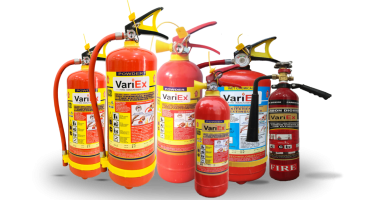 Read more +24 November 2023 in Fire Extinguisher
Read more +24 November 2023 in Fire ExtinguisherWhat types of fire extinguishers are available for different fire classes?
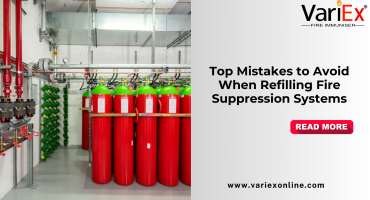 Read more +25 April 2025 in Fire Suppression
Read more +25 April 2025 in Fire SuppressionTop Mistakes to Avoid When Refilling Fire Suppression Systems
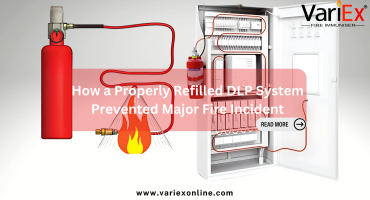 Read more +24 April 2025 in Fire Suppression
Read more +24 April 2025 in Fire Suppression

